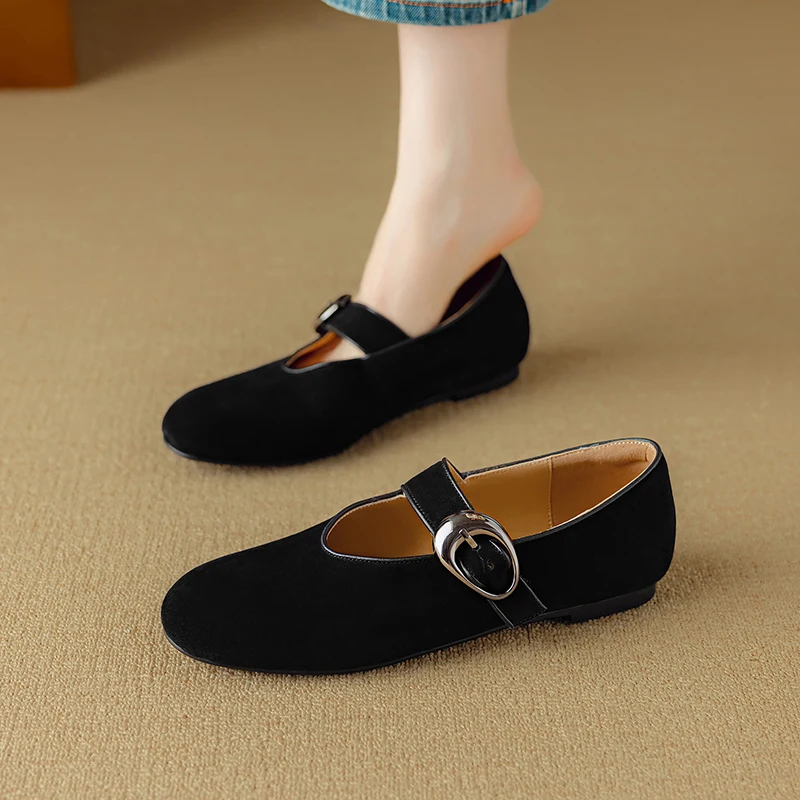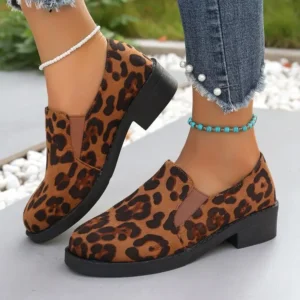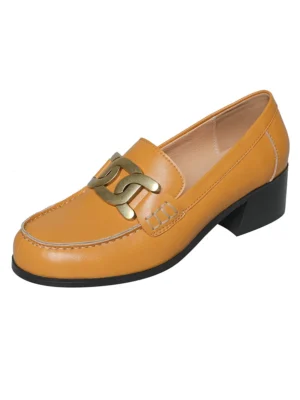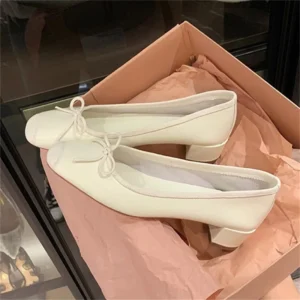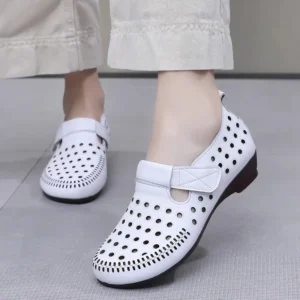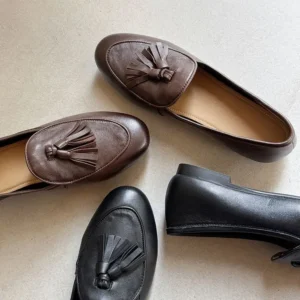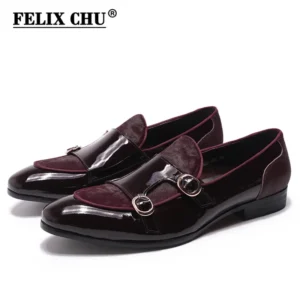What Creates a Structured Silhouette in Fashion?
In fashion, a “structured silhouette” refers to an outfit that features clean lines, defined shapes, and a tailored appearance. Unlike relaxed or flowy styles, structured fashion creates a deliberate shape that communicates polish and intention. This refined aesthetic relies on garments and accessories that maintain their form rather than draping loosely on the body.
Footwear plays a crucial role in anchoring any outfit, serving as the literal foundation for your entire look. When considering a structured silhouette, your shoe choice becomes particularly important—it can either reinforce or undermine the polished appearance you’re trying to achieve.
Loafers stand out as the perfect foundation for structured styling for several compelling reasons:
- They feature defined shapes that hold their form
- Their clean lines complement tailored clothing
- The substantial construction provides visual weight to ground an outfit
- Classic design elements create intentional visual interest
Throughout fashion history, structured silhouettes have remained timeless while trends come and go. This enduring appeal stems from how square toe loafers for modern looks and other structured elements create balance and intention in an outfit. The distinct difference between square toe vs round toe fashion demonstrates how even subtle details can dramatically impact your overall silhouette.
In this guide, we’ll explore the specific characteristics that make loafers ideal for creating structured looks, from their construction to styling applications across various contexts.
Anatomy of Structured Loafers: What to Look For
When seeking loafers that contribute to a structured silhouette, certain key features distinguish truly structured options from their more casual counterparts. Understanding these elements helps you make informed choices when building your footwear collection.
The foundation of any structured loafer is its last—the foot-shaped form around which the shoe is constructed. Loafers built on structured lasts maintain their shape over time rather than conforming completely to your foot. This results in cleaner lines and a more defined appearance, essential for a polished silhouette.
Heel design significantly impacts the structural impression of loafers. Look for these characteristics:
- Defined heel stack with clear delineation from the sole
- Reinforced heel counter (the back portion that cups your heel)
- Moderate height (typically 0.5-1.5 inches) for balanced proportions
- Square or shaped heel rather than tapered for visual weight
The toe shape dramatically affects both the formality and structure of loafers. The best square toe loafers offer clean lines and architectural presence that round toe versions simply cannot match. Square toes create visual stability and project confidence through their defined edges. Our collection of square toe flat loafers showcases this perfect balance of structure and style.
Additional construction elements to evaluate include:
- Welting quality (the strip connecting upper to sole)
- Sole thickness and profile
- Presence of decorative elements like metal bits or tassels
- Overall symmetry and precision of construction
These features combine to create loafers that maintain their shape and contribute to a structured silhouette from the ground up.
Key Materials That Maintain Shape
The materials used in loafer construction play a crucial role in how well they maintain structure over time. Premium materials not only look better initially but continue to hold their shape through years of wear.
Full-grain leather stands as the gold standard for structured loafers due to its natural durability and minimal processing. This highest grade of leather contains the original grain surface, allowing it to develop a rich patina while maintaining structural integrity. Vegetable-tanned leathers also excel at holding shape, created through traditional tanning methods using plant materials rather than chemicals.
For maximum structure, consider these exceptional leather types:
- Box calf: Dense, smooth leather with excellent shape retention
- Patent leather: Treated with a high-gloss finish that creates rigid structure
- Cordovan: Exceptionally dense horsehide known for durability and structure
- Saffiano: Textured leather with diagonal patterns and protective finish
The thickness of materials significantly impacts structural integrity. Quality leather platform loafers typically feature leather of optimal thickness—substantial enough to maintain shape without being uncomfortably rigid. Interior linings and reinforcements like structured toe boxes and heel counters provide additional support to maintain the loafer’s intended shape.
When evaluating materials, inspect both visual and tactile qualities. Premium structured leather feels substantial and rebounds when pressed rather than remaining indented. The surface should have even color and texture with minimal visible flaws or corrective finishes.
Construction Methods That Enhance Structure
Beyond materials, the construction techniques used to create loafers dramatically impact their structural integrity and longevity. Premium construction methods create loafers that maintain their shape through years of wear.
The attachment method between the upper and sole significantly affects structure. Key construction techniques include:
- Goodyear welting: Creates a defined edge and allows multiple resolings
- Blake stitching: Provides a sleeker profile while maintaining structural integrity
- Storm welting: Offers additional structure and weather protection
- Bologna construction: Balances flexibility with structure for comfort
Sole construction plays an equally important role in creating structure. Leather soles with appropriate thickness provide formality and a defined shape. Some structured loafers incorporate rubber inserts or full rubber soles without sacrificing their refined appearance. A proper shank—the supportive structure between heel and ball of the foot—prevents sagging and maintains the loafer’s intended profile over time.
Our collection of leather flat loafers exemplifies how superior construction techniques create footwear that maintains its structure while providing comfortable wear. These construction methods explain why quality loafers command higher prices—the investment in proper technique results in footwear that maintains its structure and appearance far longer than mass-produced alternatives.
The perfect structured loafer balances rigidity with appropriate flexibility. Too rigid, and the shoe becomes uncomfortable; too flexible, and it loses the structural qualities that define its elegant appearance. Premium construction achieves this delicate balance through careful design and skilled craftsmanship.
Essential Women’s Loafer Styles for a Refined Look
Several classic loafer styles excel at creating structured silhouettes, each bringing unique characteristics to your wardrobe. Understanding these variations helps you select the perfect pair for your specific styling needs.
Penny Loafers
The quintessential structured loafer, the penny style features a distinctive strap across the vamp with a diamond-shaped slot. Originally designed to hold a coin, this detail adds visual interest while maintaining clean lines. Penny loafers typically feature:
- Structured toe boxes that maintain their shape
- Defined edges around the vamp
- Substantial sole with clear delineation
- Classic proportions that create visual stability
Horsebit/Chain Loafers
Defined by metal hardware across the vamp, horsebit loafers project sophisticated structure through both their construction and decorative elements. The metal detailing adds weight to the front of the shoe, creating visual anchor points that reinforce structure. These loafers work particularly well in professional settings where their refined presence communicates attention to detail.
Tassel Loafers
Tassel loafers blend structure with subtle flair through decorative tassels at the vamp. Despite this embellishment, quality tassel loafers maintain structural integrity through:
- Precise stitching that defines the apron toe
- Substantial construction around the tassel attachment
- Defined waist between heel and forefoot
- Clean transitions between shoe elements
Monk Strap Loafers
Monk strap loafers deliver unmatched structure through their distinctive buckle closure system. This design creates horizontal lines that enhance the architectural quality of the shoe. Their formal appearance and defined shape make them excellent choices for creating structured professional looks.
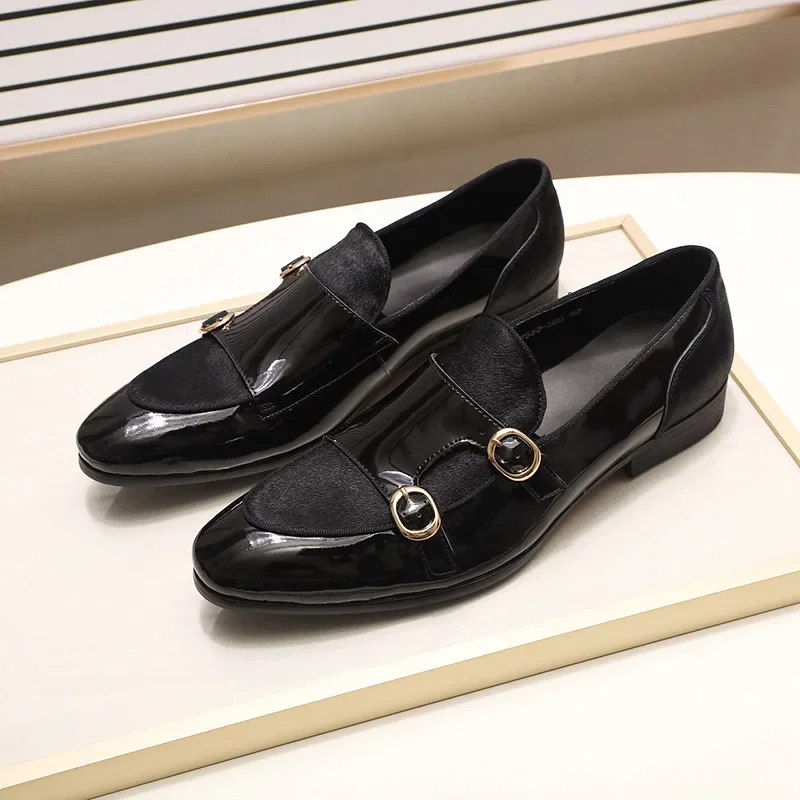
Platform and Heeled Loafers
When additional height is desired, structured square heel loafers maintain refined proportions while elevating your silhouette. The square shape of the heel creates visual stability and architectural interest. Platform styles can achieve similar effects while providing comfort for all-day wear.
Size and Fit Considerations for Optimal Structure
Even the most beautifully constructed loafer loses its structured appearance if improperly fitted. Achieving the perfect fit ensures your loafers maintain their intended shape while remaining comfortable.
A properly fitted structured loafer should:
- Hug the foot securely at the heel without slippage
- Provide approximately 3/8 inch of space beyond the longest toe
- Feel snug across the instep without pinching
- Maintain its shape when worn rather than bulging or collapsing
Common fitting challenges with loafers include heel slippage and width concerns. Since loafers lack lacing systems to adjust fit, selecting the proper size becomes particularly important. Our square heel loafers are designed with these considerations in mind, providing structure without sacrificing comfort.
For different foot types:
* Wide feet: Seek loafers with adequate width that won’t stretch out of shape
* Narrow feet: Consider styles with adjustable features or padded insoles
* High instep: Look for designs with slightly higher vamps to accommodate without stretching
A proper breaking-in period allows the loafers to conform slightly to your feet while maintaining their structural integrity. Quality structured loafers will adjust to your foot shape without losing their defined appearance.
Styling Structured Loafers for Professional Settings
In professional environments, structured loafers create a foundation for polished, authoritative looks. Their defined shape complements tailored clothing while providing comfort throughout demanding workdays.
To create impeccable professional outfits with structured loafers:
- Pair with precisely tailored trousers hemmed to create a clean break at the shoe
- Match loafer formality to your workplace—opt for polished leather in conservative environments
- Create cohesive color stories by coordinating loafers with other leather accessories
- Consider seasonal appropriateness—heavier textures for winter, lighter options for summer
Classic formulas for professional styling include:
* Dark black flat loafers + tailored trousers + structured blazer
* Burgundy penny loafers + pencil skirt + crisp button-down
* Navy horsebit loafers + neutral suiting + minimal accessories
For hosiery, sheer tights or trouser socks maintain the structured appearance while providing comfort. Avoid athletic or heavily textured socks that disrupt clean lines.
Professional color coordination works best when loafers anchor the outfit through either harmonizing with your clothing or providing calculated contrast. Black, burgundy, and navy loafers offer maximum versatility for business settings while maintaining appropriate formality.
Styling Structured Loafers for Smart Casual Occasions
Smart casual contexts allow for creative styling while maintaining structure. The key is balancing structured loafers with more relaxed elements without losing overall polish.
Effective smart casual loafer styling includes:
- Pairing structured loafers with premium dark denim (avoiding distressing or extreme fading)
- Creating contrast between structured footwear and flowing garments like midi skirts
- Incorporating structured accessories like leather belts or structured bags
- Balancing casual fabrics with formal shoe styles
Square toe loafer styling particularly excels in smart casual contexts, where their architectural presence creates visual interest while maintaining sophistication. Consider these winning combinations:
- Penny loafers + cropped trousers + oversized but structured blazer
- Tassel loafers + A-line midi skirt + tucked blouse
- Horsebit loafers + tailored shorts + crisp button-down (for warm weather)
Strategic accessorizing enhances the structured appearance of these outfits. Consider adding:
* Metal jewelry with defined shapes
* Structured handbags with clean lines
* Belts that create waist definition
The smart casual context allows for more color exploration than professional settings. Consider rich jewel tones, metallics, or even pattern in your loafer choice while maintaining structural elements.
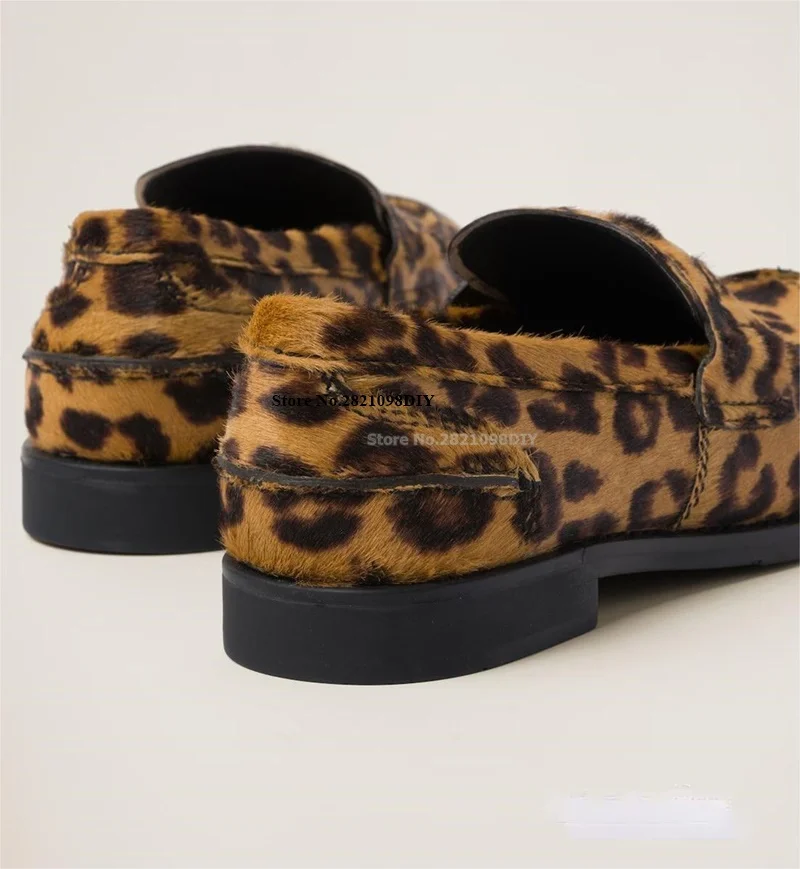
Creating Weekend Looks with Structured Loafers
Weekend styling demonstrates the true versatility of structured loafers. These shoes elevate casual looks without sacrificing comfort, creating polished outfits for everything from brunch to cultural outings.
Women's Comfortable Flat Loafers, Women's Leopard Print Loafers, Women's Low Heel Loafers
$82.50 Select options This product has multiple variants. The options may be chosen on the product pageWomen's Block Heel Loafers, Women's Heeled Penny Loafers, Women's Monk Strap Loafers
$194.04 Select options This product has multiple variants. The options may be chosen on the product pageWomen's Block Heel Loafers, Women's Square Heel Loafers, Women's Square Toe Flat Loafers
Price range: $73.61 through $86.41 Select options This product has multiple variants. The options may be chosen on the product pageWomen's Comfortable Flat Loafers, Women's Leather Flat Loafers, Women's Round Toe Flat Loafers
$124.88 Select options This product has multiple variants. The options may be chosen on the product pageWomen's Black Flat Loafers, Women's Black Penny Loafers, Women's Classic Tassel Loafers
$194.28 Select options This product has multiple variants. The options may be chosen on the product page
For casual weekend styling with structured appeal:
- Balance comfortable bottoms like quality leggings with structured loafers
- Add visual interest through leopard print loafers or other patterned styles
- Layer structured outerwear over casual basics
- Maintain clean lines even in relaxed silhouettes
Weekend-appropriate combinations include:
* Penny loafers + straight-leg jeans + oversized but structured sweater
* Tassel loafers + leggings + tunic + structured jacket
* Printed loafers + simple dress + denim jacket
Seasonal considerations affect weekend styling. In warmer months, loafers pair beautifully with shorts or summer dresses. In cooler weather, they complement slim pants and layered tops. The key is maintaining structural elements even in casual contexts.
Different loafer styles project varying levels of formality in casual settings. Penny and tassel styles read more relaxed than horsebit or monk strap versions, though all can work with appropriate styling. The right structured loafers transform even the most casual weekend outfit into a thoughtful, put-together look.
Maintaining Structure: Care and Longevity
Proper care ensures structured loafers maintain their shape and appearance for years. Quality loafers represent an investment that pays dividends through longevity when properly maintained.
Essential care practices for preserving structure include:
- Insert cedar shoe trees immediately after wearing to maintain shape
- Allow 24-48 hours between wearings to let shoes fully dry and recover
- Store in dust bags or boxes when not in use to prevent misshaping
- Clean and condition leather regularly with appropriate products
- Protect from extreme temperature and humidity fluctuations
For leather care:
1. Remove surface dirt with a soft brush or cloth
2. Clean with minimal water and leather-appropriate cleaner
3. Condition with quality leather conditioner
4. Apply polish for smooth leathers to maintain appearance and protection
5. Use leather protectant appropriate to your specific leather type
Professional maintenance can extend loafer lifespan significantly. Consider professional resoling when soles show significant wear but uppers remain in good condition. Quality modern loafer design often incorporates construction methods that facilitate repairs, making investment pieces even more valuable over time.
If loafers begin losing structure, interventions like reinforced shoe trees or professional reshaping may restore their appearance. However, prevention through proper care creates the best outcomes for maintaining structured appearance.
How to Assess Quality When Choosing Structured Loafers
Identifying quality structured loafers requires evaluating several key factors before purchasing. This assessment ensures your investment delivers both immediate structure and long-term performance.
Key quality indicators include:
- Precise, even stitching with appropriate stitch density
- Secure sole attachment without visible glue or irregular transitions
- Symmetrical construction between left and right shoes
- Clean interior finishing without rough edges or visible adhesive
- Even coloration and texture throughout the leather
Quality materials reveal themselves through both appearance and feel. Premium leathers have subtle natural variations rather than perfectly uniform appearance. They feel substantial but supple, with edges that are cleanly finished rather than rough or fraying.
Price expectations for structured loafers vary by construction method and materials:
- Entry-level quality: $100-200 for decent construction with some compromises
- Mid-range quality: $200-350 for good materials and construction
- Premium quality: $350-600+ for exceptional materials and handcrafted construction
The definitive guide to professional loafers from Artisan Haul demonstrates that balancing structure with comfort features requires attention to:
* Cushioned insoles that don’t compromise shape
* Strategic flexibility points that preserve overall structure
* Breathable linings that prevent interior breakdown
* Heel construction that provides stability without rigidity
When evaluating design details, examine ornamental elements for secure attachment and functional engineering that enhances rather than detracts from structural integrity.
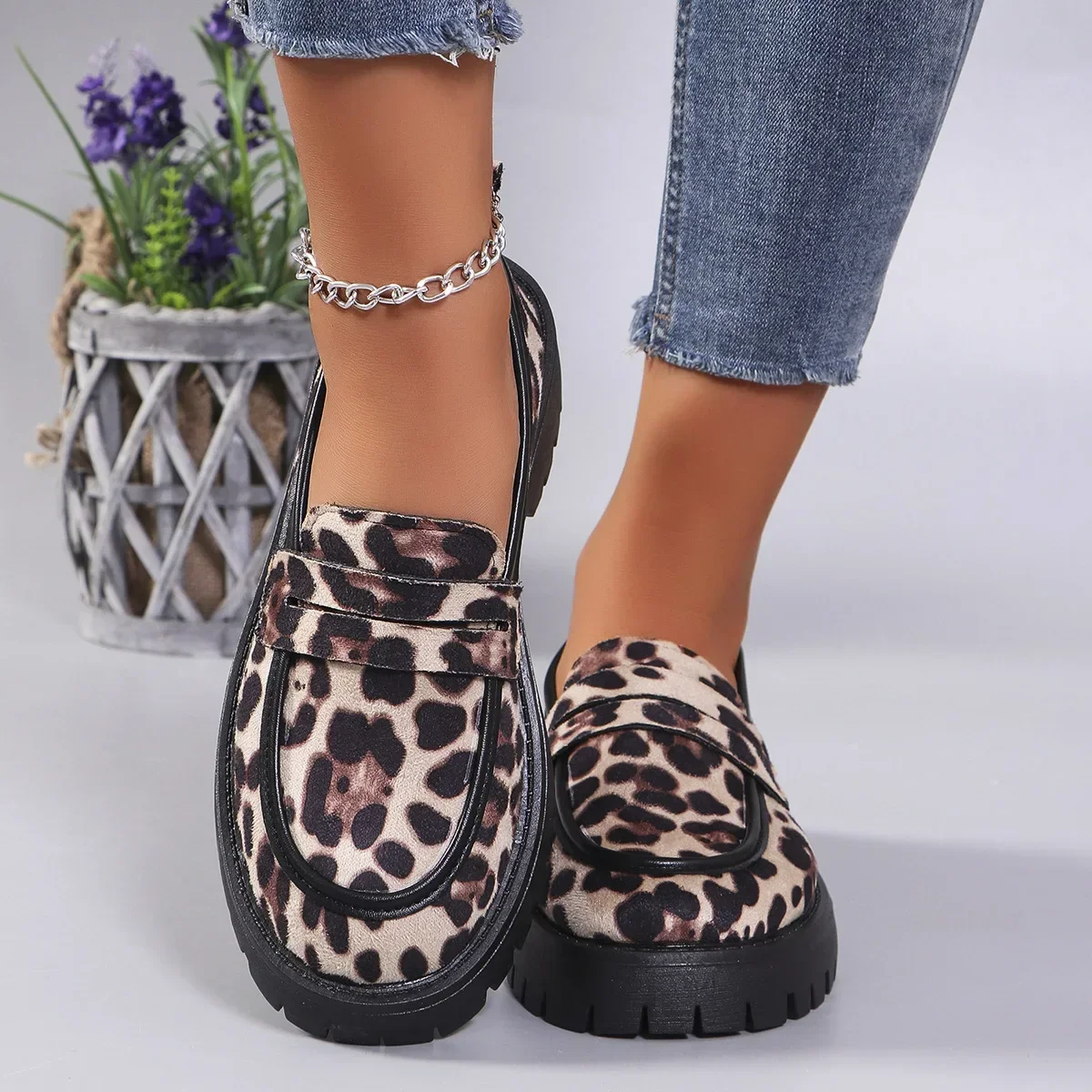
Will These Loafers Maintain Their Structure Over Time?
A common concern when investing in structured loafers is whether they will maintain their defined shape through extended wear. Several factors determine long-term structural integrity.
Quality loafers constructed with appropriate materials and techniques should maintain their essential structure for years, though some subtle softening naturally occurs through wear. Full-grain leather typically holds shape better than corrected grain or synthetic materials. Construction methods like Goodyear welting and proper internal supports significantly extend structural longevity.
Warning signs of poor structure retention include:
* Excessive creasing across the vamp after minimal wear
* Collapsing sides when not being worn
* Heel counter that loses stiffness quickly
* Sole edges that begin separating from uppers
Contemporary loafers often incorporate modern design elements that enhance structure retention while maintaining classic aesthetics. These innovations include reinforced internal components, specialized lasting techniques, and advanced materials that resist deformation while remaining comfortable.
Can Structured Loafers Be Comfortable for All-Day Wear?
The misconception that structure requires sacrificing comfort prevents many from experiencing the benefits of well-constructed loafers. Quality structured loafers balance form with function through thoughtful design.
Key comfort features that don’t compromise structure include:
* Padded insoles beneath a structured footbed
* Properly positioned arch support
* Breathable linings that prevent discomfort
* Strategic flexibility at the forefoot while maintaining overall structure
Breaking in structured loafers requires patience but shouldn’t involve pain. During the initial wearing period, limit time in new loafers to 2-3 hours, gradually increasing duration as the shoes adapt to your feet. Quality structured loafers will mold slightly to your feet while maintaining their defined shape.
Understanding how to wear square toe loafers comfortably includes recognizing that proper fit from the beginning prevents structure-compromising stretching later. Most discomfort in structured loafers stems from improper sizing rather than inherent design issues.
How Do Different Foot Types Affect Structured Loafer Selection?
Different foot shapes present unique considerations when selecting structured loafers. Finding the right match between your foot anatomy and loafer construction ensures both comfort and maintained structure.
For wider feet, seek loafers with appropriate width sizing rather than sizing up in length, which distorts proportions and compromises structure. Many quality brands offer wider widths that maintain the intended structured appearance while accommodating broader feet.
Arch support considerations include:
* High arches: Look for loafers with substantial arch support to prevent fatigue
* Low arches: Seek moderate support that doesn’t create pressure points
* Neutral arches: Most structured loafers will provide appropriate support
Those with specific foot conditions should consider loafers with removable insoles that allow for custom orthotic insertion without compromising external appearance. This customization maintains the structured aesthetic while addressing individual needs.
Artisan Haul carefully selects loafers that accommodate various foot types while maintaining their structured appearance. This commitment ensures that structural elegance remains accessible to women with diverse anatomical needs, allowing everyone to enjoy the sophisticated silhouette that quality loafers provide.

